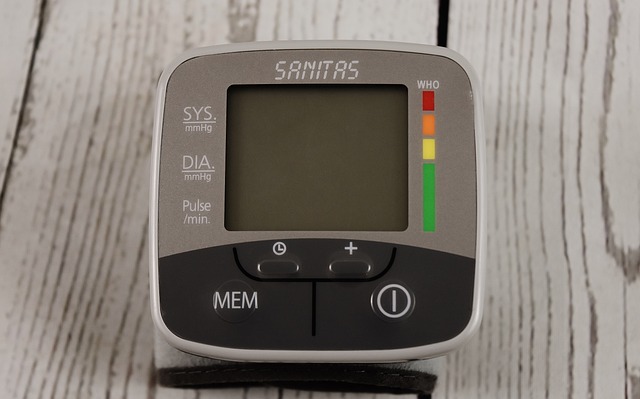Diabetes blood tests are vital for early detection and management, assessing blood sugar levels through FPG, OGTT, and HbA1c. Normal ranges vary, with prediabetes indicated by elevated levels (100-125 mg/dL) and diabetes confirmed by consistently high results (>126 mg/dL). Regular monitoring enables individuals to make informed decisions about diet, exercise, and medication, empowering them to lead healthier lives and prevent complications.
Diabetes, a chronic condition affecting millions, demands proactive management for a healthier life. Early detection through diabetes blood tests is key, allowing for timely intervention and improved outcomes. This article delves into understanding diabetes, exploring various blood test types, interpreting results, and managing the condition effectively based on test findings. Knowing your numbers is empowering—let’s explore how diabetes blood tests can be your ally in navigating this journey.
- Understanding Diabetes and the Importance of Early Detection
- Types of Diabetes Blood Tests
- Interpreting Diabetes Test Results
- Managing Diabetes Based on Blood Test Findings
Understanding Diabetes and the Importance of Early Detection
Diabetes is a chronic condition that affects the way your body processes blood sugar (glucose). It occurs when the pancreas doesn’t produce enough insulin, or when cells don’t respond properly to insulin. Insulin is essential for transporting glucose from the bloodstream into cells, where it’s used for energy. Without adequate insulin, glucose builds up in the bloodstream, leading to high blood sugar levels. If left unmanaged, diabetes can cause a range of health complications, including heart disease, nerve damage, kidney failure, and vision loss.
Early detection through regular diabetes blood tests is crucial for effective management. By identifying elevated blood sugar levels at an early stage, individuals can take proactive measures to prevent or delay the onset of full-blown diabetes. This often involves lifestyle changes such as maintaining a balanced diet, engaging in regular physical activity, and losing weight if necessary. Early detection also enables healthcare providers to prescribe appropriate medications or insulin therapy to keep blood sugar levels under control, thereby reducing the risk of long-term complications.
Types of Diabetes Blood Tests
Diabetes blood tests are essential tools for early detection and management of this chronic condition. There are several types of diabetes blood tests that healthcare professionals use to monitor blood sugar levels, diagnose diabetes, and track its progression. The most common ones include fasting plasma glucose (FPG) test, oral glucose tolerance test (OGTT), and hemoglobin A1c (HbA1c) test.
The FPG test measures blood sugar after a period of fasting, typically overnight. An OGTT involves fasting followed by the consumption of a sugary drink, with subsequent measurements taken after 2 hours. This test is crucial for diagnosing type 2 diabetes. HbA1c, on the other hand, reflects average blood sugar levels over the past 2-3 months and is used to assess long-term control of diabetes. Regular monitoring through these tests enables effective management, helping individuals make informed decisions about their diet, exercise, and medication regimens.
Interpreting Diabetes Test Results
After a diabetes blood test, understanding your results is crucial for early detection and effective management. The most common diabetes test measures your blood glucose level, which indicates how much sugar is in your blood. A normal fasting blood glucose level typically ranges from 70 to 100 mg/dL (milligrams per deciliter). Levels between 100 and 125 mg/dL suggest prediabetes, while consistently high levels—over 126 mg/dL on two or more tests—indicate diabetes.
Interpretation of these results is essential for proactive health management. If your test shows elevated blood glucose levels, further testing may be required to confirm a diabetes diagnosis. Your healthcare provider can guide you on the next steps, which may include lifestyle changes, such as adopting a healthier diet and increasing physical activity, or medication to help control blood sugar levels. Regular monitoring and follow-up tests are vital to effectively managing diabetes and preventing potential complications.
Managing Diabetes Based on Blood Test Findings
Managing Diabetes Based on Blood Test Findings
The results of a diabetes blood test play a pivotal role in early detection and management of the condition. Once a person’s blood glucose levels are determined, healthcare providers can offer tailored guidance and treatment plans. For individuals with prediabetes, these findings serve as a wake-up call to make lifestyle changes such as adopting healthier eating habits, increasing physical activity, and potentially losing weight to prevent or delay the onset of type 2 diabetes.
For those already diagnosed with diabetes, regular blood tests help monitor blood sugar levels, assess the effectiveness of current treatments, and adjust medications if necessary. This continuous management ensures that blood glucose remains within a healthy range, reducing the risk of complications associated with long-term high blood sugar levels. By acting on the insights gained from diabetes blood test results, individuals can lead healthier lives and better manage their condition.
Diabetes blood tests play a pivotal role in early detection and effective management. By understanding different types of tests and interpreting results, individuals can take proactive steps towards maintaining their health. Regular monitoring enables timely adjustments to lifestyle and treatment plans, ultimately preventing complications and improving quality of life for those living with diabetes. Embrace the power of these simple yet impactful tools to navigate the journey of diabetes care.
